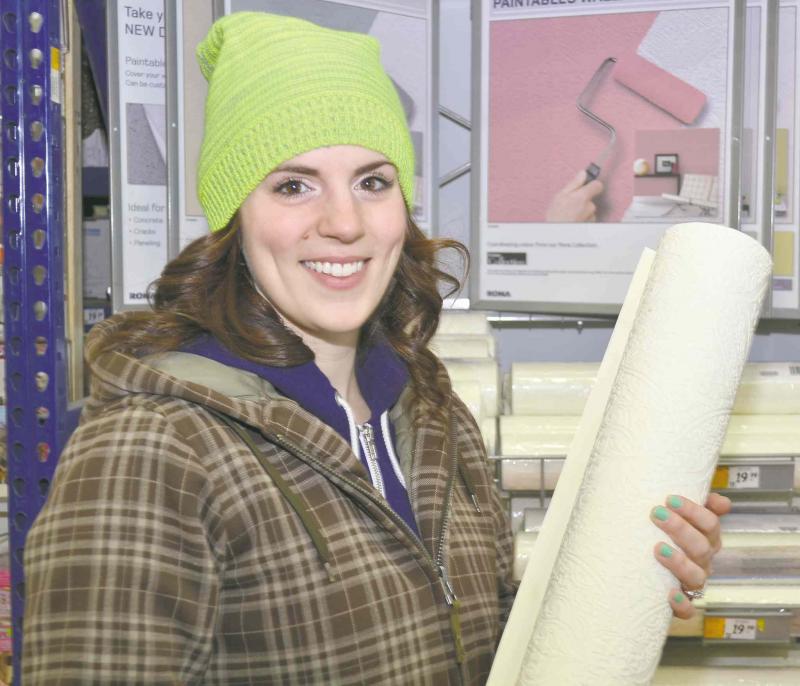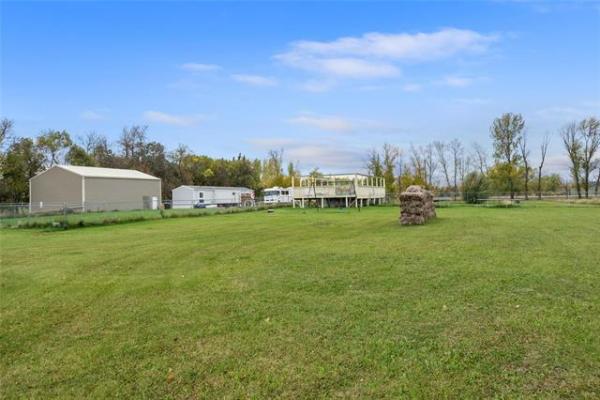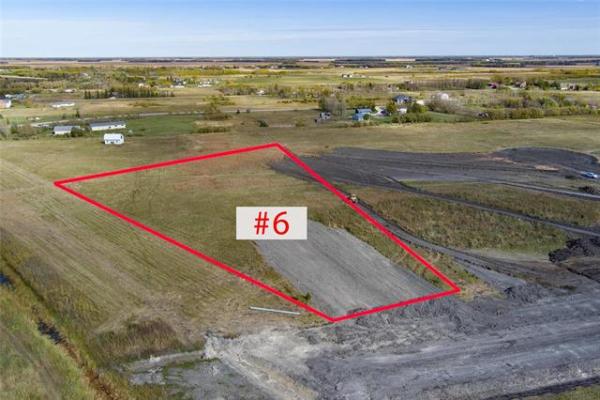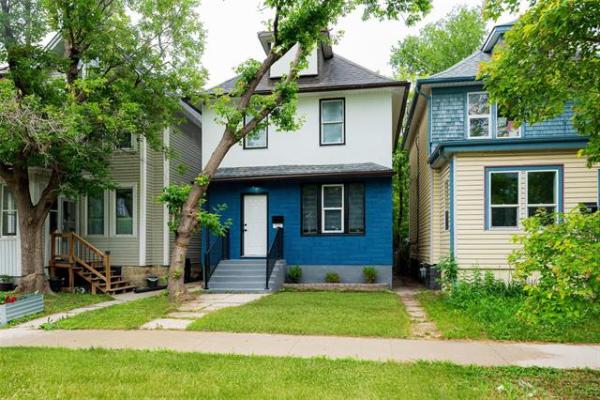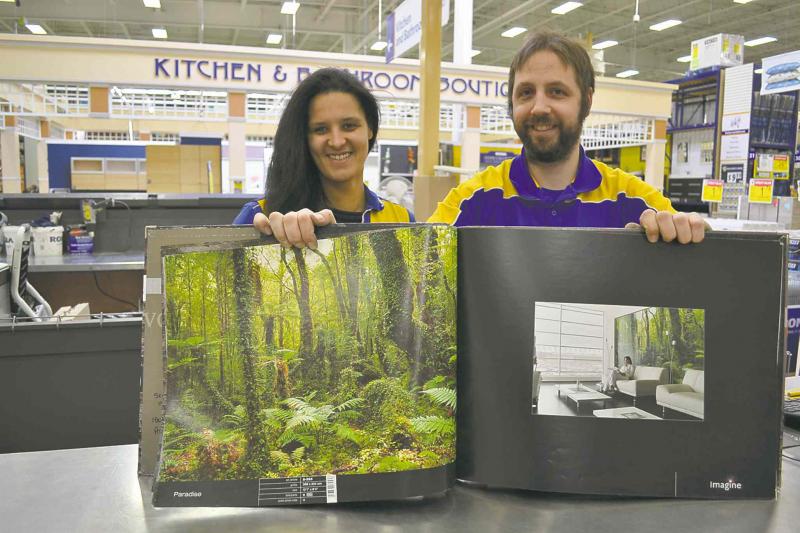
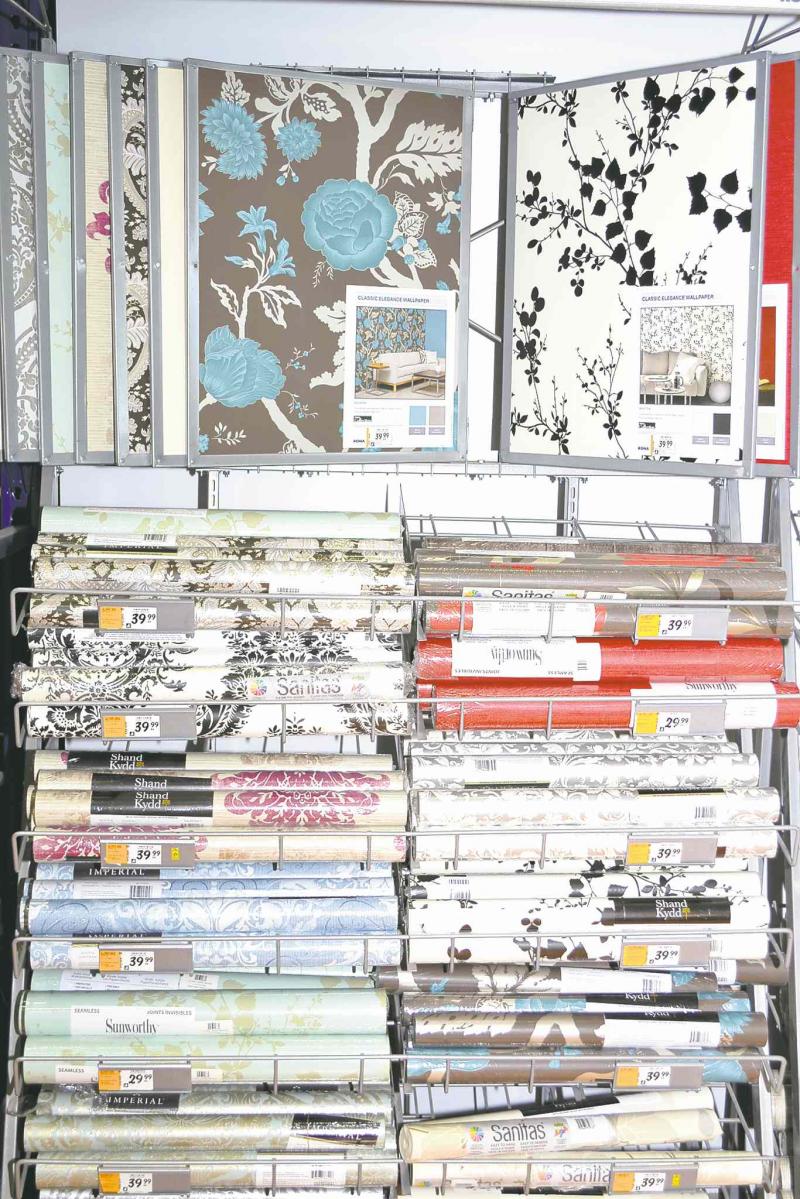
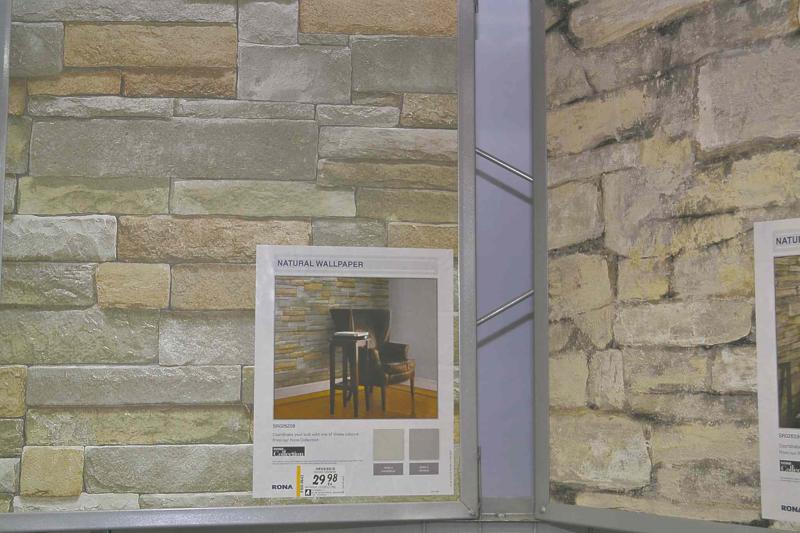
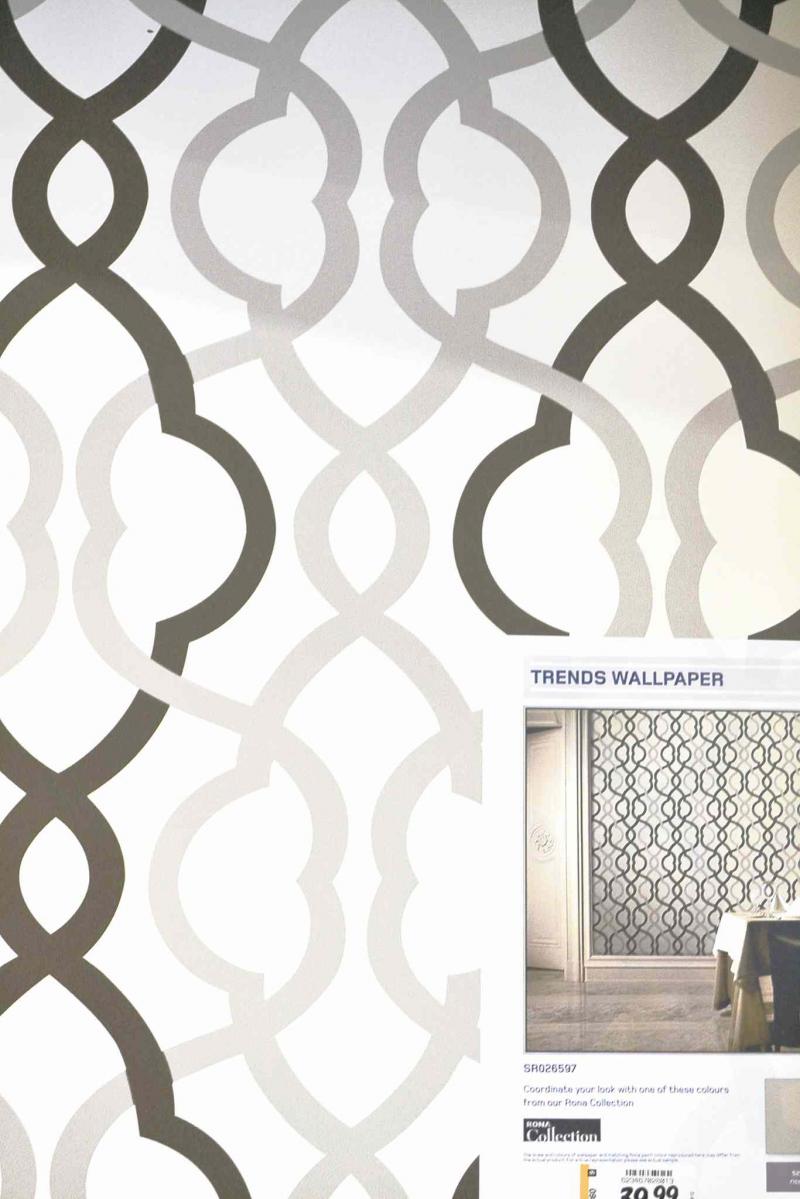
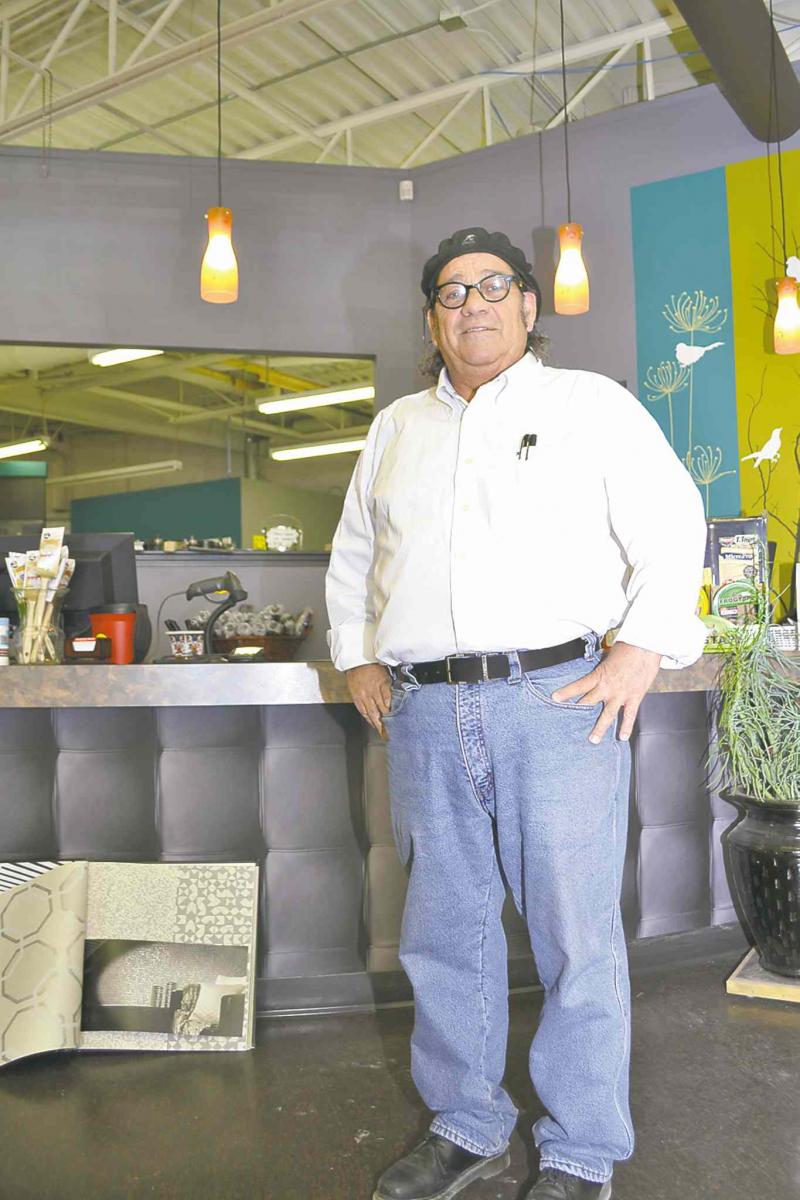
When people decide to renovate an older house, the first thing to go is wallpaper.
As there are thousands of designs, colours and textures of wallpaper on the market, picking the right style for your home can be made easier and less tense (marriages have ended over such a choice) by talking to a person who sells wallpaper for a living and is knowledgeable about all aspects of the product.
Because I'm a believer in the phrase "good taste is timeless and ugly wall covering will haunt you forever," I spent a day recently interviewing salespeople at four Winnipeg paint and wallpaper stores.
The first and best conversation I had was with Warren Mark, owner of Park City Paints, a Benjamin Moore outlet on Regent Avenue.
Mark, who has been in the paint and wallpaper business for 45 years, is enthusiastic and informed about the new products he sells.
"During the heydays of the '70s and '80s, there was a lot of inexpensive wallpaper sold with gaudy colours and questionable artwork such as bouquets of orange flowers on a purple background. Psychedelic, yes; beautiful, no," Mark said.
By contrast, he said today's wallpaper is made of heavier paper of almost photographic grade, features dramatic, artful styles, comes in textured or smooth surfaces and, in some cases, designs that fool the eye into believing the image is three-dimensional.
"In today's world, people are making a fashion statement when they apply wallpaper, because it looks like a work of art," Mark said, adding that instead of covering an entire room, most homeowners will create a feature wall that is visually stunning.
He said that with paint, a person is limited to a darker or lighter tone or different colour for a feature wall, but with wallpaper, the styles and designs are as manifold as the stars in the cosmos.
On the practical side, he said modern wallpaper meets fire code and is DIYer friendly because improved adhesives make it easier and less messy to hang than pastes.
His favourite manufacturer is Crown because it constantly updates its products and, along with other companies, will send free 20-inch by 20-inch samples within two to three days to clients who are unsure how the designs they have chosen will look in their homes.
Mark also retails a line of DIY window film by Decozi, an Onatrio company that provides an array of polymer films that can be applied to glass with water and a squeegee. The designs are limitless, ranging from a stained-glass look to Japanese rice paper. The company's Safety and Security film is clear, blocks 99 per cent of UV rays and prevents glass from shattering into dangerous shards.
Top-of-the-line wallpaper costs about $40 to $100 per single roll (22 to 26 square feet), making the average cost to cover an eight-foot by eight-foot feature wall using DIY labour over $200.
By comparison, the cost to prime and paint an eight-foot by eight-foot feature wall with the best paint available at $70 per gallon would be over $100 (brushes and rollers, etc., not included), double the price if you hire a professional painter.
(You'll have leftover paint, but as you can't return half-full cans, store oil-based paints in a freezer. Water-based products can be preserved by drooping a piece of plastic food wrap over the edges of the can to just above the level of the paint. With the lid tightly sealed, this technique will keep latex paint fresh for a long time, especially if it is stored in a cool area of your home.)
My next interview was with Tamara Jones and Kevin Somers of Rona's paint and decor department.
Jones said one of her bestselling products is textured, paintable wallpaper that sells for about $20 for a 50-plus-square-foot roll.
"The product is taking over the textured-paint market because it comes in a variety of raised designs that give a feature wall a three-dimensional look, unlike paint that relies on material like crushed stone embedded in the liquid to produce a grainy surface," she said.
Textured paints also have the disadvantage of being difficult to apply in an even coat, resulting in over- or under-textured areas of a wall, she said, adding that the paint is very difficult to remove compared to modern wallpaper, which can be stripped away by scoring the surface and applying fabric softener to break down the old paste.
"When people buy paintable wallpaper, they can see what the pattern looks like before the paper is applied to the wall," added Somers. "With textured paint, you never really know what to expect."
He said all the wallpaper products Rona sells are pre-pasted, though the company does stock adhesives for wall coverings that are not impregnated with glue.
Before applying wallpaper, the substrate should be primed with a prep coat ($32.99 a gallon) that seals the surface and fills in small dents and cracks, Somers said.
Jones said applying pre-pasted paper is as simple as running a roll through a plastic tray (sold separately) filled with water, allowing excess moisture to drain away from the paper. Starting at the top of a wall, the damp paper is pressed onto the substrate with a tool with a steel edge on one side and a plastic edge on the other.
"If there is water oozing from the side of the paper, a smoother with a fabric edge is recommended to soak up the excess moisture and to ensure a bubble-free surface," she said.
In addition to paintable paper, Rona stocks a Natural Rustic product that includes lightly textured designs such as stone and brick that are difficult to discern from the real thing.
Somers said this product sells for $29.99 for a 54- to 56-square-foot roll.
"We also have a Trends line retailing for $39.99 a roll that features everything from birch trees in winter to elegant floral designs," he said.
A special-order paper by Komar consists of enlarged reproductions of National Geographic photos published in the magazine over many years.
"One of the images of the New York City skyline was taken before 9/11 when the twin towers were still standing," said Jones, adding the high-definition reproductions of everything from cityscapes to polar bears to shots of Earth from outer space come in eight-foot by 12-foot panels for about $60, double roll.
She said special-order paper takes two to three weeks to arrive at the store. Borders can also be ordered for $30 per five-yard roll, and Rona stocks a line of children's borders.
My next interview was with Gareth Yates, store manager of Sherwin-Williams Canada Inc. at 1500 Regent Ave.
Yates said his outlet sells a lot of textured wallpaper by People's Choice and Inspired by Colour.
"We stock very little product, but the two design books from which we order cover an enormous number of styles and designs produced on quality paper," Yates said.
He said prices vary by pattern, costing on average from $60 to $80 per double roll, though it's not uncommon for clients to pay $100 or more for top-of-the-line papers. Borders run from $20 to $30 for a five-yard spool.
"All our wallpaper is pre-pasted and most of it is applied by DIYers who use it to create feature walls. In some cases, they'll do a Parisian-style design where the upper half of the wall is papered in a different pattern than the bottom half," he said, adding every paper he sells is scrubable and washable.
My final consultation was with Western Paint and Wallcoverings, an iconic Winnipeg store that opened for business in 1908.
Unfortunately, the company was short-staffed and I encountered some trouble locating a staff member knowledgeable about wallpaper.
Though the person I eventually spoke to was not one of the store's wallcovering experts, he had 45 years in the paint business and imparted some good information about wallpaper.
For example, he advised never to attempt to wallpaper over an existing wall covering.
"It's been done, but the results are generally mediocre to a complete disaster if the old paper begins to peel away from the substrate or if the new paper does not adhere to the old paper," he said, recommending pre-pasted wallpaper, especially for DIYers.
There is a line of enlarged NFL posters that are popular with men who enjoy their home-based sports caves, he said, adding the company stocks 60 patterns of wallpaper that appeal to both genders.
"We can also special-order several hundred unique designs from most of the main manufacturers and distributors."
The company maintains a large showroom with wallpaper that starts at $35 per single roll (22 square feet) and climbs to over $200 for designer-name paper, he said.
An appointment to meet a wall-covering expert in the showroom is advisable, as in my experience, the staff are generally too busy to talk over the phone.

